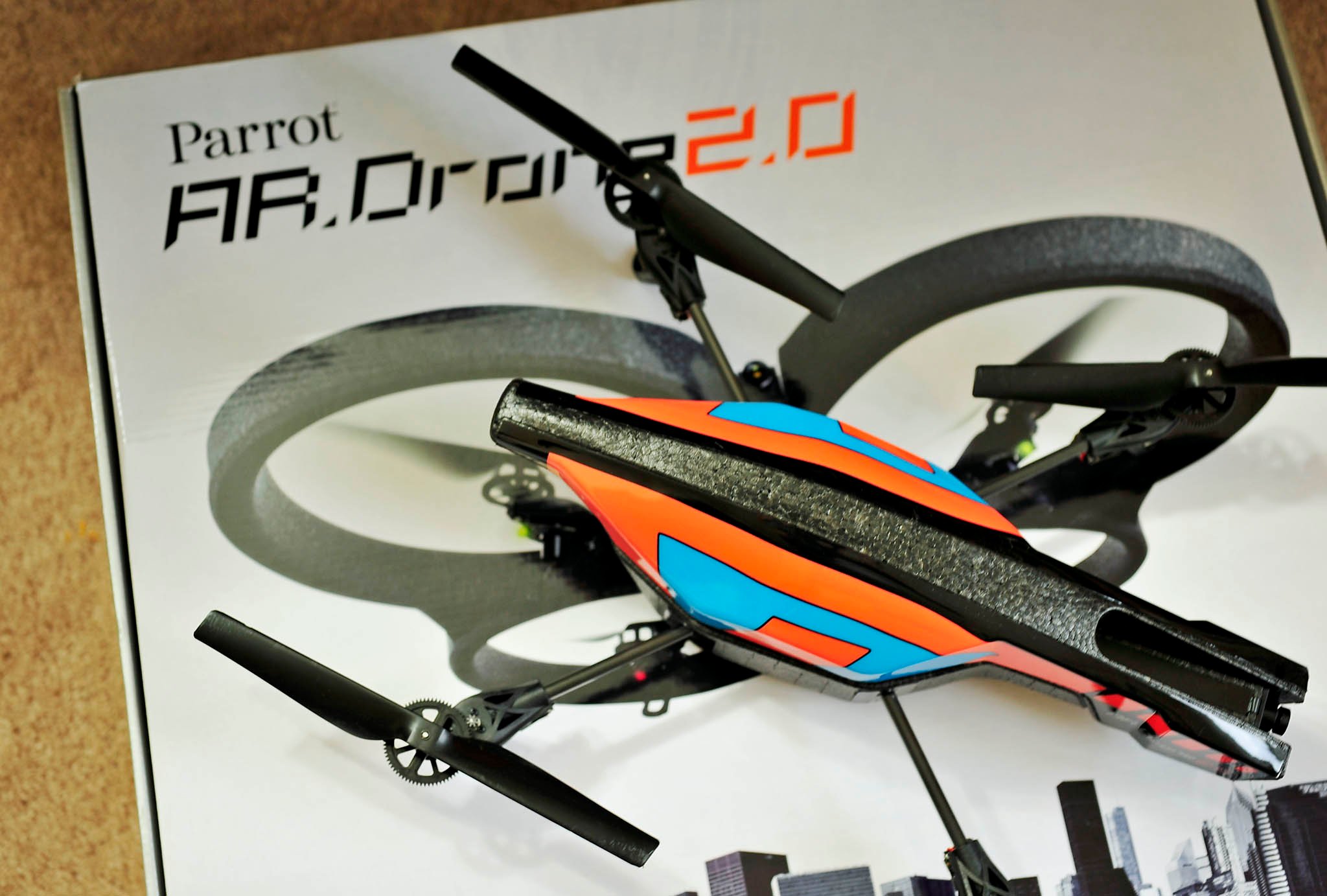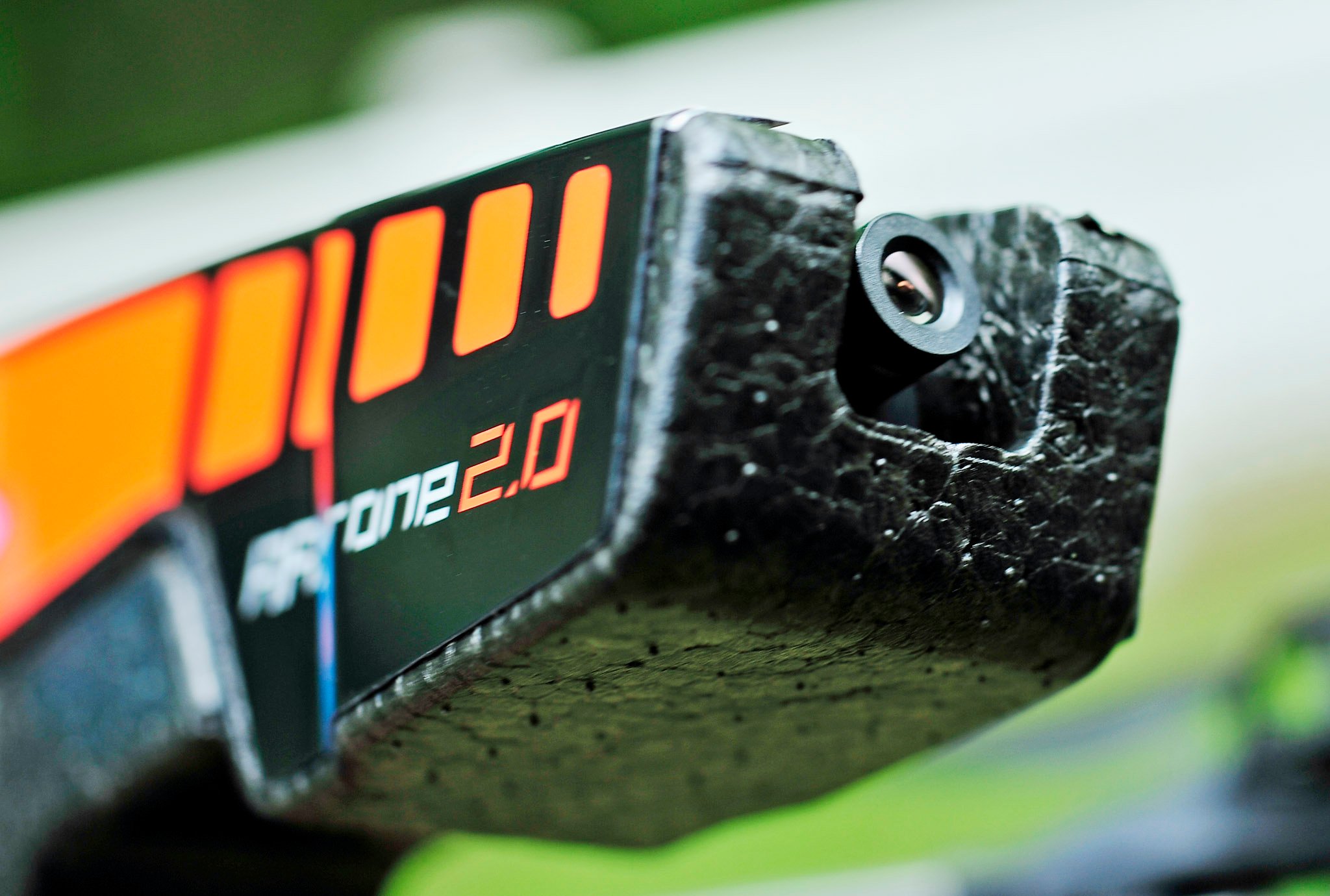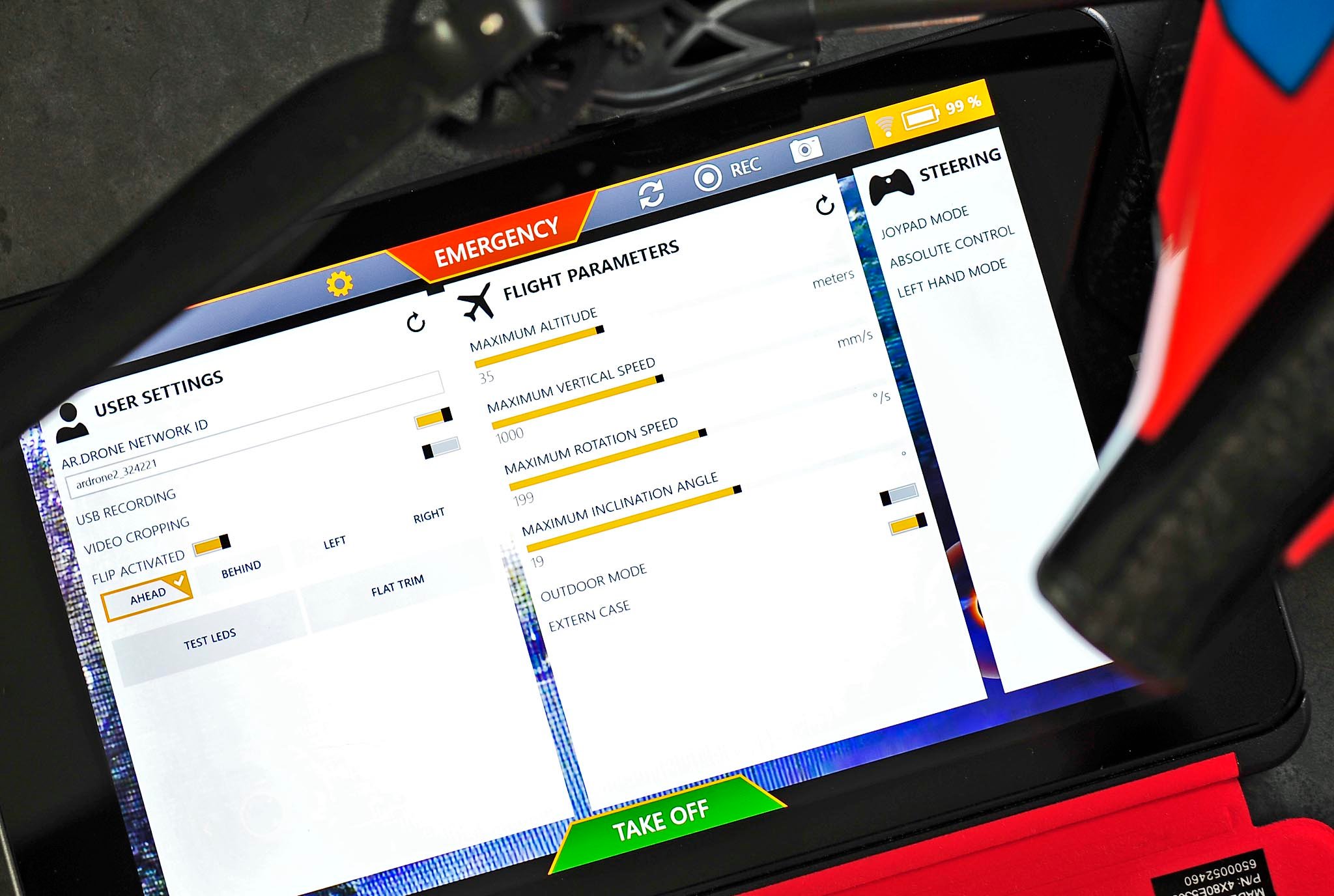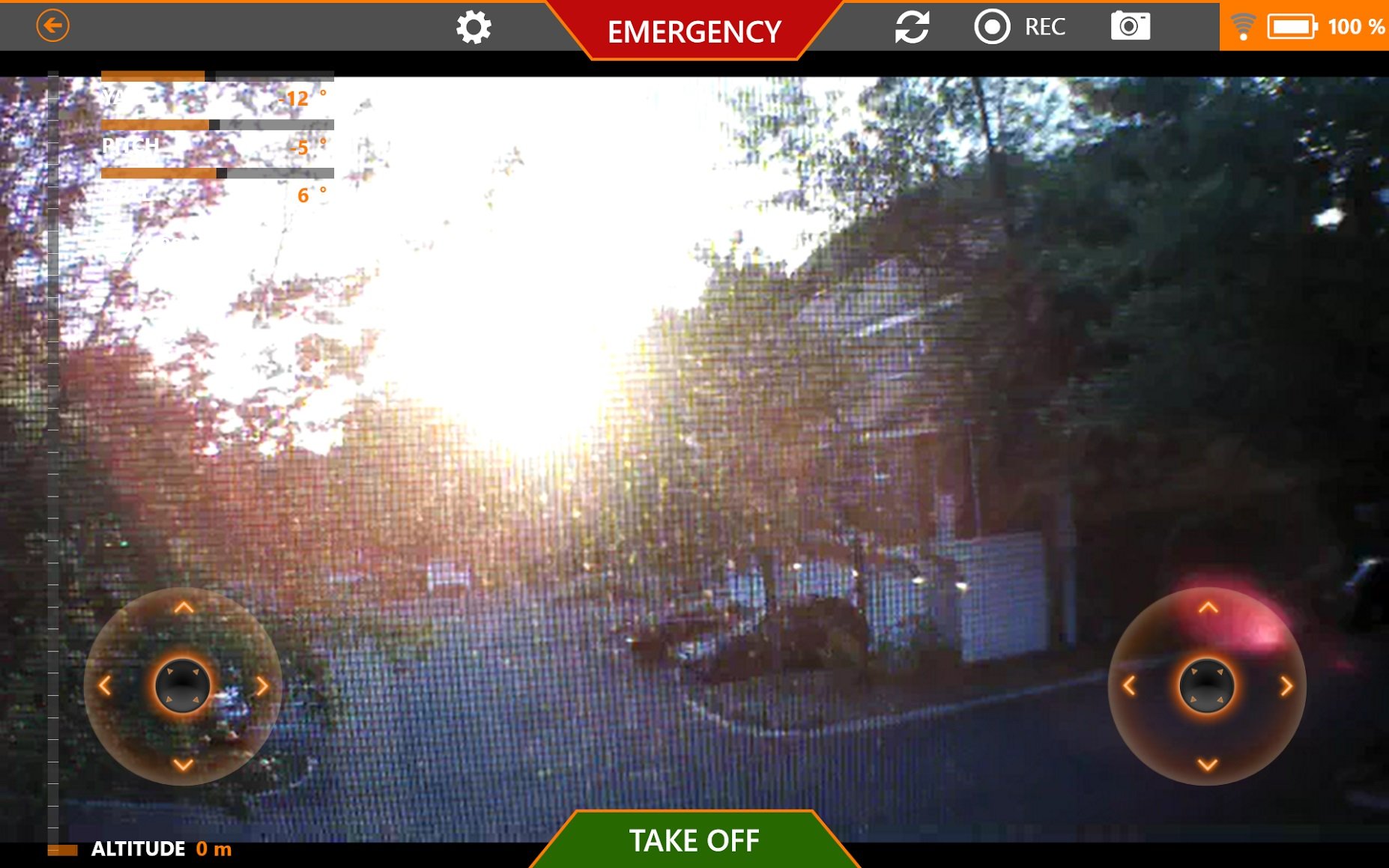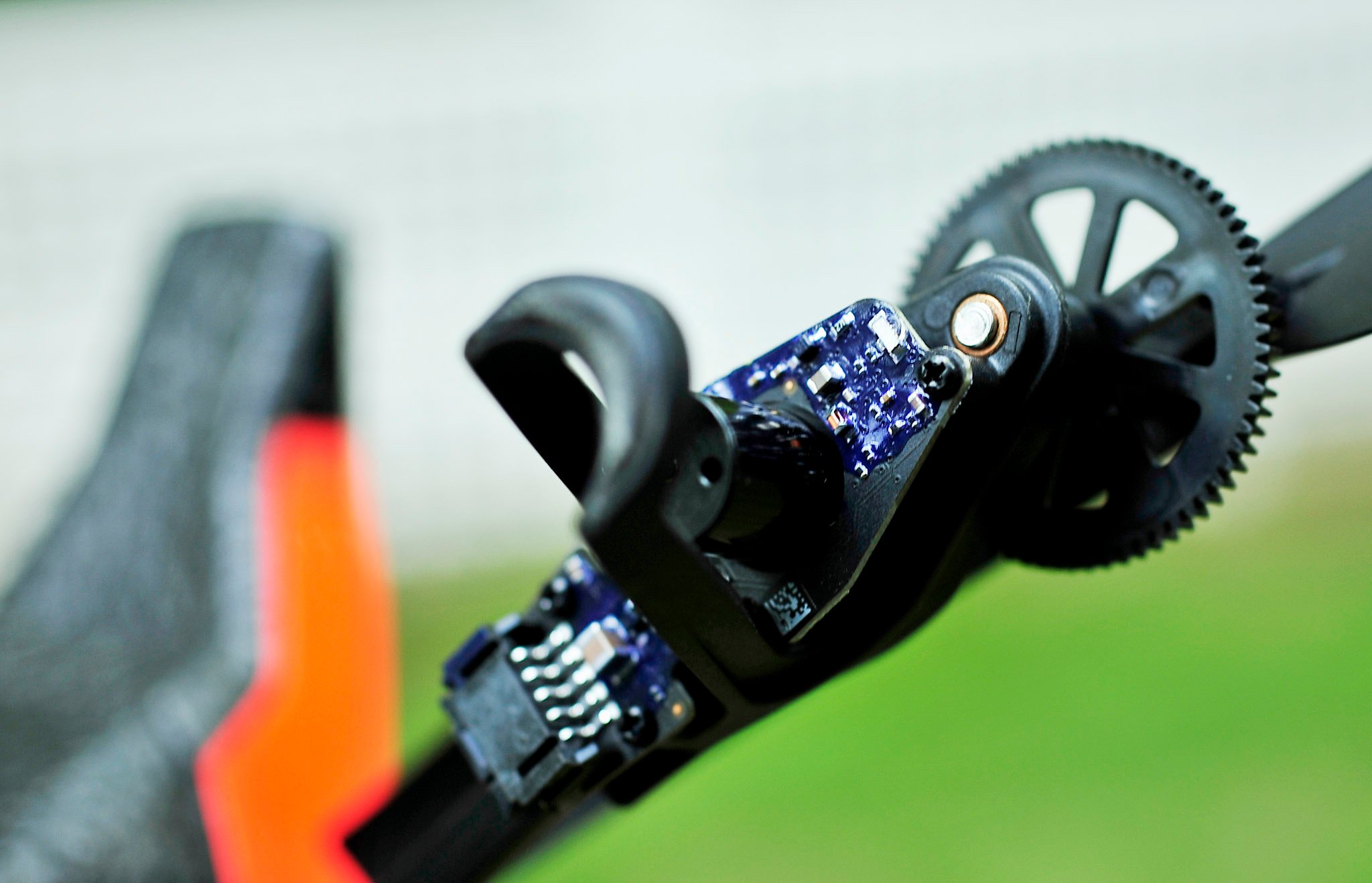Flying the Parrot AR.Drone 2.0 Quadricopter with a Windows tablet (Hidden Gem)
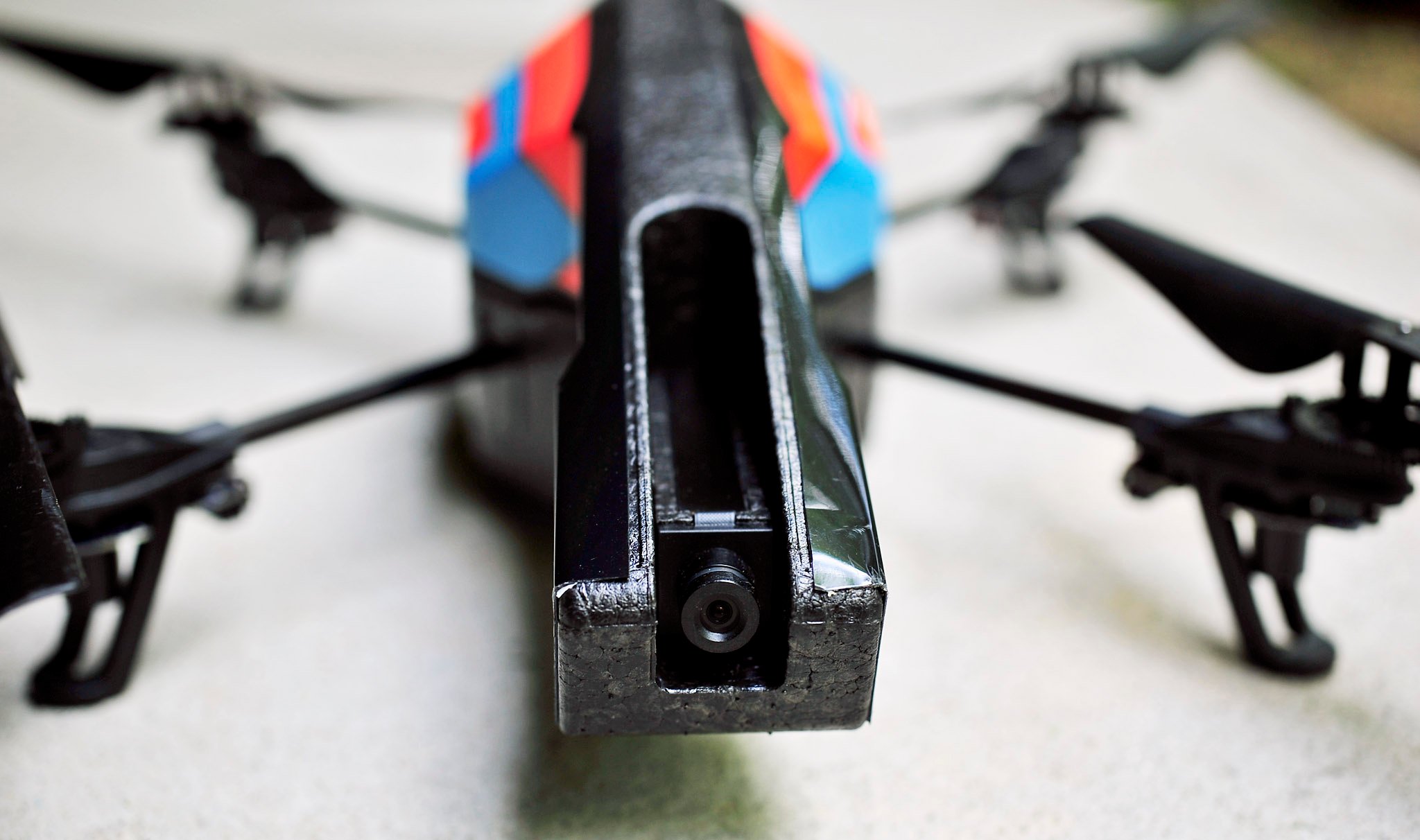

The word 'drone' has certainly entered the mainstream vocabulary of everyday citizens, in part due to the US government, and the other part due to consumer-grade vehicles that are readily available. It should be no surprise that military technology trickles down after all look at the history of the Internet itself.
Parrot is no newcomer to the drone scene and their AR.Drone series is possibly the iconic representation of the growing market. The AR.Drone 2.0 came out two years ago, and it has since gone on to be one of the most widely adopted quadricopters in the consumer segment. Back in May, Parrot finally released their AR.FreeFlight app for Windows 8.1 and the company told us that their Windows Phone app was on the way.
Do you want to see it all in action? Then watch our demonstration video and see what I think! Remember, by leaving a comment on our Hidden Gem, you are entered to win one (of two) Parrot AR.Drone Quadricopters!
What it is
The AR.Drone 2.0 is a personal Quadricopter, which is almost as fun to say, as it is to use one. Think of it is an RC car for the sky, except that you use your tablet (and eventually your phone) to control it. Toss in a decent camera with recording capabilities and you have what probably is the neatest toy you can pick these days. Take off, do flips, buzz around the neighborhood, and freak out your elderly neighbors, – it is all possible with the AR.Drone 2.0.
How much is it?
Yesterday I shared with you the $129 Sphero 2.0 connected orb, which is cheap compared to the $299 Parrot AR.Drone 2.0 Quadricopter (Amazon link. Then again, the AR.Drone is slightly more awesome and let me reiterate that you are buying a freaking drone.
What is in the box?
For $299, you get the AR.Drone with two hulls (indoor and outdoor), one battery, one-charger instructions. However, I strongly suggest you opt for the $329 package, which comes with an extra battery. Trust me you need it.
The AR.Drone 2.0 is made from a highly durable foam that wraps the core mechanics. The blades are plastic, and the whole vehicle is surprisingly light.
All the latest news, reviews, and guides for Windows and Xbox diehards.
The camera
The AR.Drone 2.0 comes with an HD 1280x720 front camera and a 480P bottom camera. Neither are fantastic, though the front camera is good enough to keep most people satisfied for a $300 toy. By connecting a USB thumb drive to the drone, you can record at any time with the free AR.FreeFlight software. There is no audio.
Battery life
The (lack of) battery life is probably the biggest shocker, or maybe not. The AR.Drone 2.0 gets maybe 15 minutes of flight time from a single battery. No joke. Not only do you need a second battery, picking up a third may not be a bad idea either.
Just like smartphones, RC toys do not have advanced in batteries either, and powering four rotating blades fast enough to lift a small drone sucks up some juice. Luckily, the batteries can be swapped in, and out in seconds, and the handy wall charger replenishes the battery within an hour.
AR.FreeFlight for Windows 8.1
The software for the AR.Drone gets the job done and fits well with Windows 8.1. To connect the drone up, you plug in the battery and let the drone do its brief engine diagnostics. Once completed, it fires up its own Wi-Fi network (Wi-Fi direct), and you connect the tablet by selecting the Drone's Wi-Fi channel. This is a better system than Bluetooth as the range, and bandwidth are better. After the two have connected, you can launch the AR.FreeFlight software and begin your flight.
The controls for the AR.Drone 2.0 require some practice, but they setup is understandable. Like other RC devices, you pilot the drone with two virtual D-pads: one for steering horizontally, the second for vertical control and rotating horizontally. Users can choose outdoor or indoor mode, with the latter restricting height and speed, making it more forgiving in confined spaces.
Outdoor more lets you set the flight ceiling (up to 165 feet, which is crazy), acceleration, speed and just about everything else. Outdoor mode also enables 'flipping,' where the drone does a flip in mid-air. You can control the flip direction, including front, back, to the right, to the left, and double tapping the D-pads executes the move.
If you are flying outdoors (which is much more enjoyable), then I advise you remove the blade-guard hull and use the minimalist one. The reason for that is two-fold: The blade-guard hull is likely to get caught in branches if you crash and the AR.Drone 2.0 is remarkably resilient to crashing, including the blades.
The software has two prominent buttons labeled 'Emergency' and 'Land/Takeoff.' The latter button is an autopilot feature that lets the drone rise for a takeoff or to land when the flight is complete. The drone uses two-ultrasound sensors on the bottom for altitude measurement, and guidance during 'Land/Takeoff. The emergency button is in case you are coming dangerously near someone (or something) and you need to kill the power. Doing so shuts down the drone, and it falls like a rock from the sky. In other words, unless you want to break the drone, best to avoid using it unless you have to do so.
Users can toggle the camera view (front or bottom) with a touch of a button and initiate recording for video.
Flying the drone
Piloting the AR.Drone is like riding a bicycle. It is not easy at first, but after a few sessions, you notice a marked improvement. Every time I took out the drone for a flight, I got fancier and more adept. Crashing is part of it, but the drone holds up well to the abuse. I do recommend flying over a grassy field and obviously avoiding large, solid objects.
The battery life is a real bummer on the AR.Drone 2.0 but this is hardly a trivial problem to solve with today's current lithium-polymer batteries. The fact that you can swap the battery in 30 seconds means there is very little downtime, and to be honest you probably won't fly it for too long as each session can be quite intense.
Video recording is a bonus, and although it does not holdup to many cameras in 2014, it still super fun to view after a flight. You can additionally add a GPS add-on to the AR.Drone 2.0, which lets you map a flight path and set a 'home' location to return too, though reviews for it are mixed.
Replacement parts and third-party accessories (like a headlight kit) are affordable and bring some expendability to the system. You can even buy larger batteries, knocking the 1000 mAh default battery up to 1800 mAh.
Conclusion
For a cool factor alone, the AR.Drone 2.0 is a ton of fun. Flying the copter around the parking lot and improving my flight skills is a great way to kill some time in the evening or on the weekend. Your neighbors may be scared, but don't let that stop you.
The Windows 8.1 software is fun to use and once connected I rarely had any issues. Like Sphero, there are third-party options available too if you prefer a different design for your app.
Personally, I cannot wait until the Windows Phone app becomes available. In conclusion, if you are looking for a new, slightly expensive hobby, then go pick up an AR.Drone 2.0. On the other hand, you can wait a few months for their highly anticipated Parrot Bebop Drone with its f/2.2 1080P stabilized camera. Drool. I know I will.
What do you think of connected toys like the Parrot AR.Drone 2.0 – passing fad or is it the future? Let us know in comments and don't forget to check our other Hidden Gems!
Thanks to Mark Guim for the work on the video review

Daniel Rubino is the Editor-in-chief of Windows Central. He is also the head reviewer, podcast co-host, and analyst. He has been covering Microsoft since 2007 when this site was called WMExperts (and later Windows Phone Central). His interests include Windows, laptops, next-gen computing, and wearable tech. He has reviewed laptops for over 10 years and is particularly fond of 2-in-1 convertibles, Arm64 processors, new form factors, and thin-and-light PCs. Before all this tech stuff, he worked on a Ph.D. in linguistics, performed polysomnographs in NYC, and was a motion-picture operator for 17 years.

